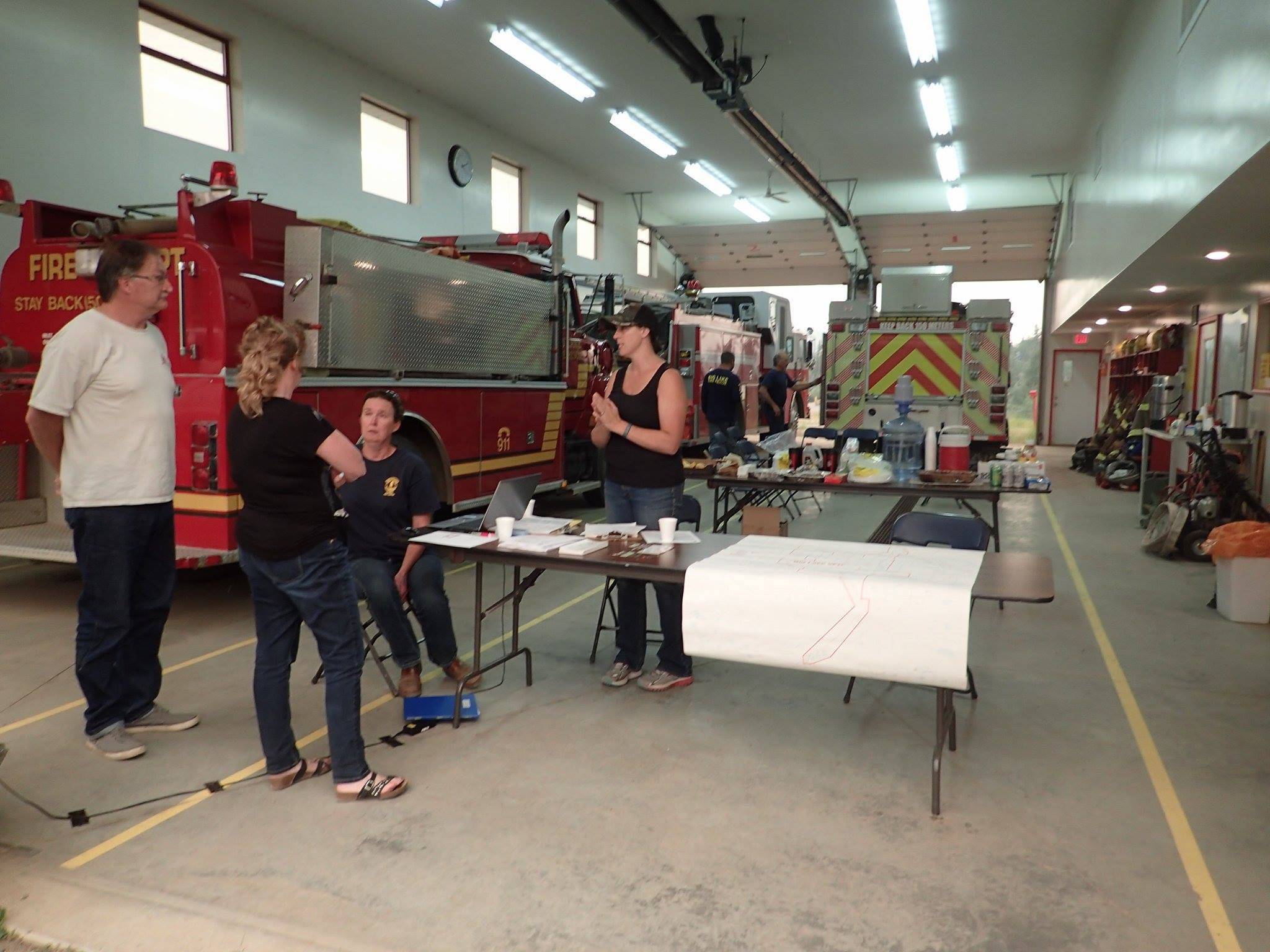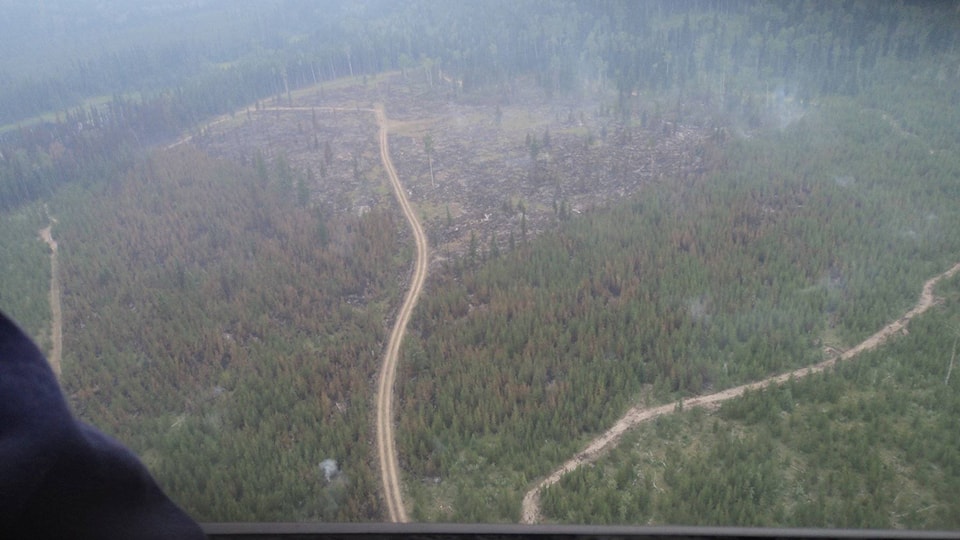Through the wildfire situation Big Lake Volunteer Fire and Rescue’s hall at Big Lake Ranch has become a command centre.
Fire Chief Joel Bruneski said the BC Wildfire Service approached his department two days after the wildfires began and asked if they could set up a staging area at the hall.
“A couple of us have been focusing our efforts on the command centre,” Bruneski told the Tribune. “We don’t have any danger tree assessors on our crew so once forestry is done the main knock down of dangerous trees in our area then we go in and do the mop-up. They can then move onto the other fires because there are so many in the area.”
On the evening of Friday, July 7, Bruneski said his crews were called out to several fires.
”I think there were three or four that day,” he recalled. “Most of them were so far away from the road that we could not get to them, but we did fight on one until dark that night. The one we went to was in our fire protection area and we could see lots all around the area.”
There are 18 members on the BLVFR and a “list of those who want to join,” Bruneski said.
As soon as the wildfires started, the fire hall became an information centre in order to get information out to the public because it was very difficult to get any at first, he added.
“We were mustering forestry crews, our crews and equipment operators out of here to work on the fire so we’d have meetings first thing in the morning before everyone went out and give everyone updates.”
Right from the beginning people from the community started bringing in food for meals.
A group of women, “sort of headed by the ladies auxiliary,” and “a whole bunch more” stepped up and have been organizing, planning and cooking all the meals, Bruneski said, noting at the most there have been 120 people being fed at one time.
“We are giving them breakfast in the morning, sending them out with bagged lunches and then serving supper in the evening.”
Community member Leanne Schiemann has been the go-to-person at the fire hall and said during the first week four community members with passes were driving regularly to Quesnel to buy groceries and medications because the stores were closed in Williams Lake.
But now that Kornak and Hamm’s Pharmacy has re-opened and food trucks are stocking the shelves at Save-On-Foods, Schiemann said the pass-holders will be able to get those supplies in Williams Lake.
Praising people from Fort McMurray who brought Big Lake some supplies during the first days of the wildfires, Schiemann said she and some of the other members of the community were crying when they showed up.
“They were so great,” she said of the crew from Fort Mac.
Bruneski said the forestry crews work from 7 a.m. to 7 p.m. so the Big Lake crews have been keeping about the same hours.
There was one night the BLVFR worked long into the wee hours because they were tasked with serving the evacuation orders to about 200 homes.
“That may not be a large number in the scheme of things but it was a large area to cover,” he said. “I think the last crew returned at about 2:30 the next morning.”
After days of seeing smoke from the fire hall Bruneski said lately it has been clearing up because the majority of the wildfires are quite a distance away. On Wednesday morning he said it was hot and windy so they were expecting to see some increased fire activity in the area.
“On Monday they did a back burn on the Spokin Lake fire toward Spokin Lake, it was kind of in between us and that area and you could see that.”
Seeing clear skies again has been a bonus and it looks positive, but, he warned “we are not out of the woods yet.”
Bruneski has been the fire chief for about two and half years. His father Ray Bruneski was fire chief for about 17 years and Karl Schiemann was as well.
“I am one of founding members of the fire department,” Bruneski said. “We started it back in 1995. My dad, my mom (Sharon) and myself are the only remaining founding members.”
When asked if the department needs anything, he laughed and said “rest.”
“We’ve had a lot of huge support from community members and from businesses. Acklands brought us some safety equipment, Fort McMurray has been supplying us, and I cannot think of anything off hand that we need.”
Bruneski said he does not know how long the BCWS will used the fire hall for its crews and some crews are staying there.
“Once we started housing them, they pay for the food and we prepared it.”
In the last count there were 26 wildfires within the area being worked out of the fire hall.
“They are not all within our fire protection area, but out of this fire hall we have serviced between 20 and 30 fires. A lot of them are out now, but at the most we had five choppers working out of here. We have a helicopter fuelling area right here at the fire hall.”
Bruneski said this is the first time he has dealt with wildfires of any significant size.
“We have had a bit of training, but it’s quite different when it’s this scale.”
Schiemann said the other day a group of people from the community were talking about how the wildfire situation has become “kind of normal.”
“We were wondering what it will be like to go back to our regular lives,” she said.

